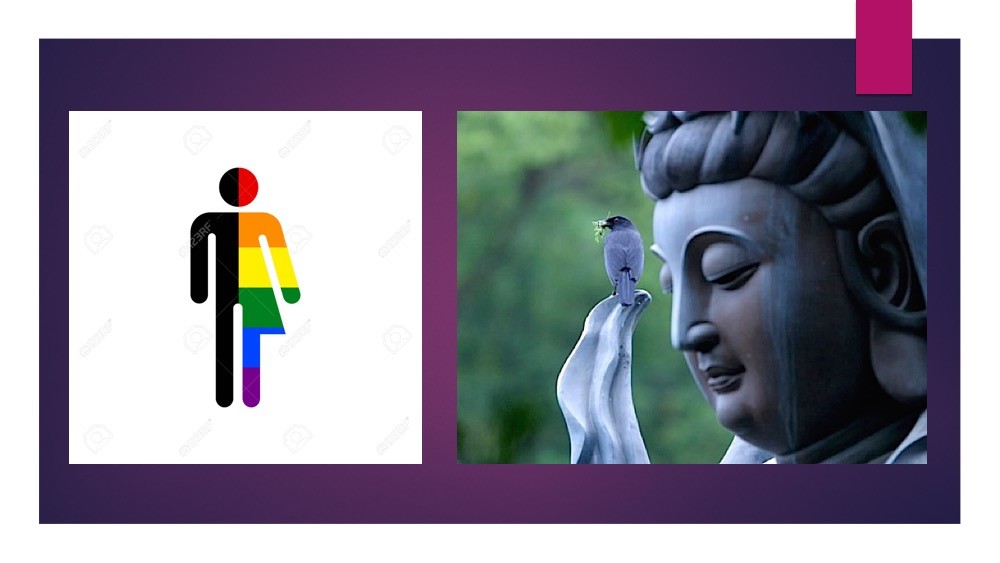Natural Balance: The Art of Transforming Suffering

Photo curtesy of Aura Glaser, Ph.D. www.auraglaser.com
By Amma Thanasanti
With the world events, I have been looking for ways to respond. This morning was our Ovada, a time when Bhikkhuni’s from around the country gather on a conference call to listen to an elder monk’s reflections. Venerable Punnadhammo’s talk was based on Bhikkhu Bodhi’s translation and commentary, Transcendental Dependent Arising: A Translation and Exposition of the Upanisa Sutta. When I listened to his talk and felt coolness and clarity emerge, it gave me ideas of what to share with you.
One of the characteristics of existence is dukkha. Dukkha refers to the unsatisfactory nature of things which are imperfect, change and do not give us lasting happiness. The first response to dukkha is to deny its existence. Eventually, reality starts pearing through the cracks. We feel more pain in our body, get distracted, seek sense pleasures, get preoccupied with work, planning or facebook to keep our focus away from unpleasant reality. When that no longer works, we sink into despair. The problems can seem insurmountable.
Understanding dukkha and the cause of dukkha takes clear thinking – an assessment of where we are at and how we got there. The teachings tells us that suffering is cyclical- the more we suffer, the more we tend to grasp for solutions. I see that my grasping for frameworks and solutions is increasing my anxiety. However, suffering can also catalyze another movement, the longing to move out of suffering. This first step out of suffering is supported by faith, the faith that there is a way out. What, in the world can we have faith in, when is so much is unreliable, when our grasping for solutions is tied up with suffering? There are many different words for this from many different traditions. Buddha used the unborn, unbecome and uncreated to point to what is beyond suffering. I have been calling this pervasive awareness and pervasive love.
The first movement out of suffering requires that we engage with a quality that can not be conceptualized, cannot be supported by reason or the intellect. Reason has to be balanced with faith – something other than reason – to get out of suffering.
When our mind is supported by faith, when we have an inkling that there is something other than the suffering of our conditioned existence, we experience joy. This is why chanting, devotional practices, contact with wise beings or places that support access to pervasive love and awareness can be helpful. Most times when I’m in nature, I experience joy.
With joy as a supporting condition, we experience rapture. The body and mind feel deeply well. The body tingles and feels a lot of pleasure. When we experience rapture, we then can feel the deep well being of happiness.
If we were walking through a desert and we met someone who said that over the ridge was an oasis – that first inkling of relief would be joy. When we get to the oasis, plunge into the cool water, drink our fill and satiate our hunger with fresh fruit, that is the experience of happiness – an abiding sense of contentment that comes from our needs being met.
When we feel happy, our minds become still. We stop looking for happiness, because we are resting in happiness. This supports the mind getting more focused and able to see things as they actually are. Seeing things as they actually are is a critical part of awakening. Weary from suffering, the arahant seeks complete liberation. Seeing clearly uproots greed, anger and confusion that are the sources of suffering. This is a sublime achievement.
The Bodhisattva path, however, feels the pull of suffering in the world and seeks to engage, not out of ignorance but out of compassion. Awareness is pervasive. It permeates everyone and everything, without exception. Who I am is not fundamentally separate from you, your suffering, or the world around me. Pervasive awareness and pervasive love are not two separate things but different aspects of the same thing. From this perspective, it doesn’t make sense to sit quietly in bliss, when the world and people I care about are burning around me. But from the wellspring of pervasive love and awareness, there is great resource from which to respond. It sustains this endless journey, because in its embrace, the weight of problems lighten.
Here is another place balance is needed. My access to pervasive love and awareness is interspersed with feelings of confusion, overwhelm, concern, and anxiety. Human warmth – my connection to relative love and compassion are also needed. Peers, the wisdom that emerges from community also support me finding ways to meet what is arising with care and compassion without contributing further to the overarching problems of grasping, aversion, or ignorance. These also help me respond to what is arising in the present moment without superimposing some idea of how I should be or what I should be experiencing. Sometimes here too, the balance of pervasive love and relative love are not found through withdrawal into silent contemplation but through engagement.
Awakening Truth Newsletter!



 Amma Thanasanti
Amma Thanasanti





